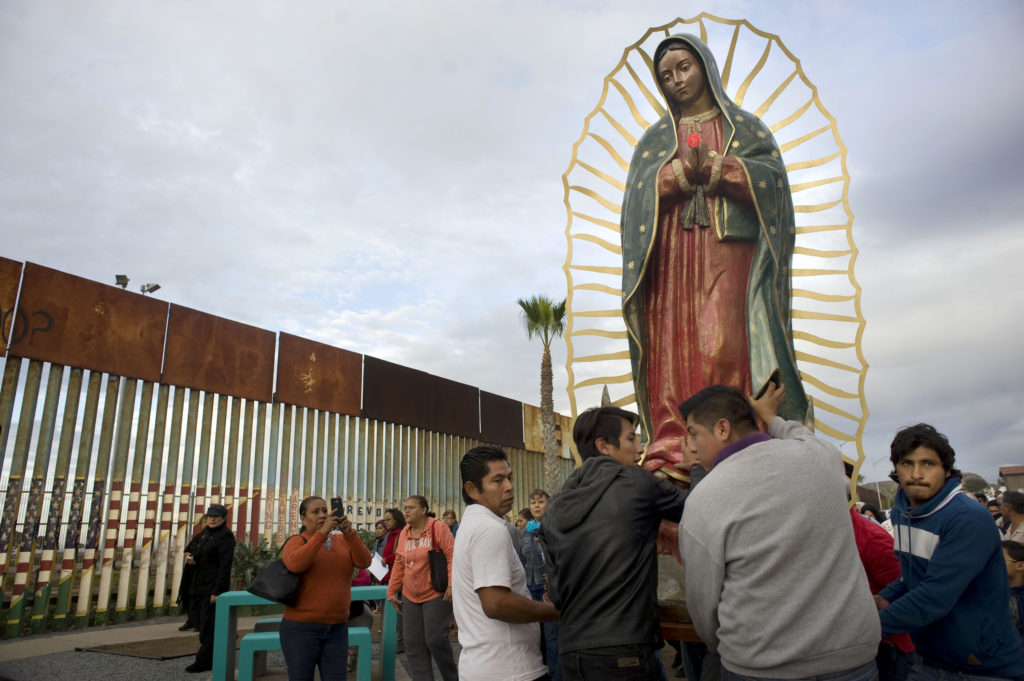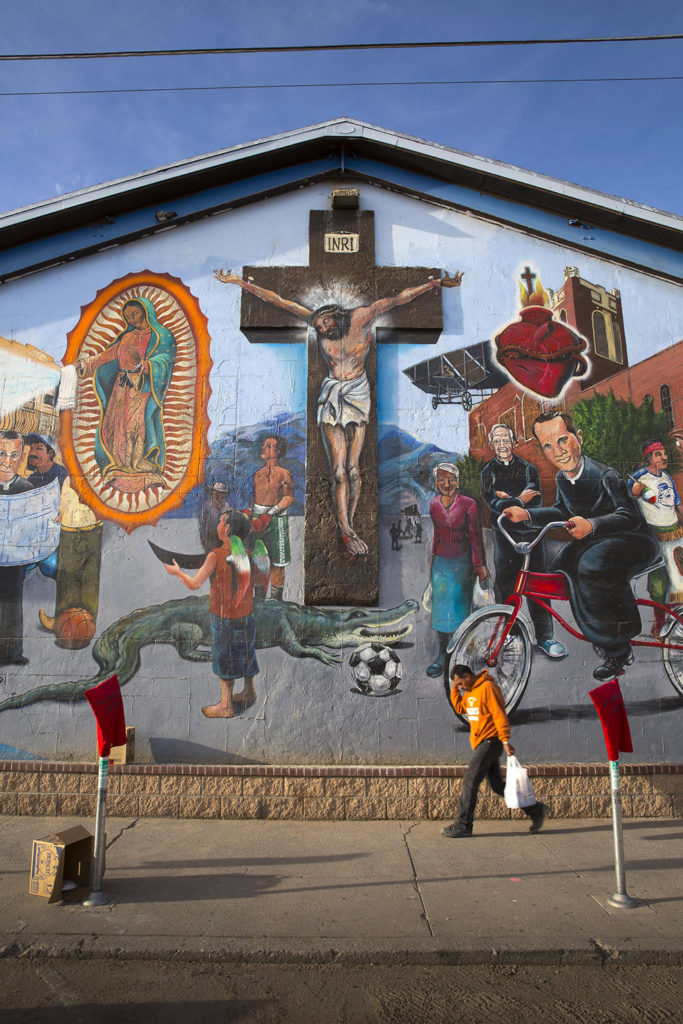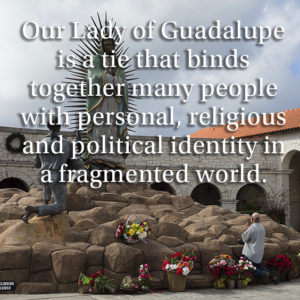By Renata Furst
Catholic News Service
“Our Lady of Guadalupe, Queen of Mexico, Empress of the Americas.” This grand title, found on traditional banners celebrating the Virgin of Guadalupe, highlights her widespread impact throughout this continent.
She can be found in churches and homes, in the names of restaurants, rivers, counties and construction businesses. Her name and image are portable, gracing T-shirts, candles, medals, posters, mugs, stationery … the list is endless.
Our Lady of Guadalupe is firmly rooted from Our Lady of Guadalupe Co-Cathedral in Anchorage, Alaska, to a small chapel dedicated to the Virgin of Guadalupe at the very southern tip of South America. The Virgin is celebrated beyond the Americas, with processions, for example, in several churches in Rome.
Her presence is often attributed to the diaspora of Mexican immigrants throughout the Americas. Yet her popularity has also expanded, becoming a transnational phenomenon, embracing other Hispanic and non-Hispanic peoples, as well as non-Catholics.
Why does the Virgin of Guadalupe have such a widespread religious and social impact today?
Perhaps her origins could shed light on this. The “Nican Mopohua (Here it is said …)” is an account of the apparitions to St. Juan Diego, written in Nahuatl, the Aztec language. It tells the story of Guadalupe appearing to St. Juan Diego in 1531, approximately 10 years after the Spanish conquest of the Aztec Empire. This was a time when the Aztec culture and society was being conquered, absorbed and transformed into something new.
The Virgin of Guadalupe appeared on a hill dedicated to the goddess Tonantzin, virgin-mother of the Aztec gods, but she is given the name “Guadalupe,” also the name of a dark-skinned virgin venerated in Extremadura, Spain, since 1326.
The image of Guadalupe imprinted on the “tilma,” or cloak, is that of a young native woman who is pregnant. She shares the skin color and features of the native peoples but is also clearly part of the religious imagination of Catholicism at that time.
The “Nican Mopohua” records Juan Diego’s conversations with the Virgin, but also tells the story of his interactions with Spanish religious authorities. This is a time when the world of Aztec culture, religious belief and political organization gives way to a new hybrid “mestizo” identity being forged from Aztec, other native and Spanish cultures.
Although Juan Diego was canonized in 2002, there is still scholarly debate about his origins and questions about the authenticity of the appearances of Our Lady of Guadalupe. Nevertheless, the image continues to have a tremendous national and transnational impact today.

Within Mexico itself, the Virgin of Guadalupe is not only a religious image and source of devotion, but also a powerful symbol of national identity. Yet, she is not accepted by everyone.
In recent elections, political parties debated and appropriated the symbolism that the image has for the Mexican people. For some, Guadalupe is a powerful image of religious and national unity, while others decry her as a political symbol for parties that historically oppress the people.
Traveling northward, Our Lady of Guadalupe has become a powerful symbol of hope and help to migrants crossing the U.S.-Mexico border. In the 16th century, her image crossed borders of religion, language and culture, a characteristic that is still attributed to her by those who move across the U.S.-Mexico border today.

She is literally painted on both sides of the border wall at many sites, a powerful symbol of unity painted on this divisive barrier. (See the Segundo Barrio murals in El Paso, Texas.)
The Virgin not only transcends space but also time because she is often embedded in scenes from contemporary everyday life, such as baseball games, kitchens, political rallies, etc. Far from being a tool of oppression for women, her cultural significance to border communities is connected to the idea of a consoling mother who cares for the dispossessed and is concerned with their liberation.
The Virgin of Guadalupe is also crossing denominational boundaries. Scholars, pastors and people in ministry to Hispanics from the mainline Protestant denominations are urging their members to reconsider the place of Guadalupe in their theology and practice, despite the contradiction that all approved Marian apparitions have called for repentance and conversion within the Catholic Church.
Carl Trovall, a Lutheran pastor, writer and academic wrote: “Her narrative speaks a profound and affirming welcome for the mestizo, the poor, the alienated, the lonely, the struggling, the dying and all who reside in the Americas.”
“Queen of Our Hearts,” another Marian title, has been appropriated by many of Guadalupe’s fans and devotees. She is a “nexus of affect,” a tie that binds together many people providing them with personal, religious and, yes, political identity in a world that is fragmented, often violent and uncaring. She is “emperatriz (empress)” but also “madre” de las Américas.
Renata Furst is associate professor of Scripture and spirituality at Oblate School of Theology in San Antonio.







